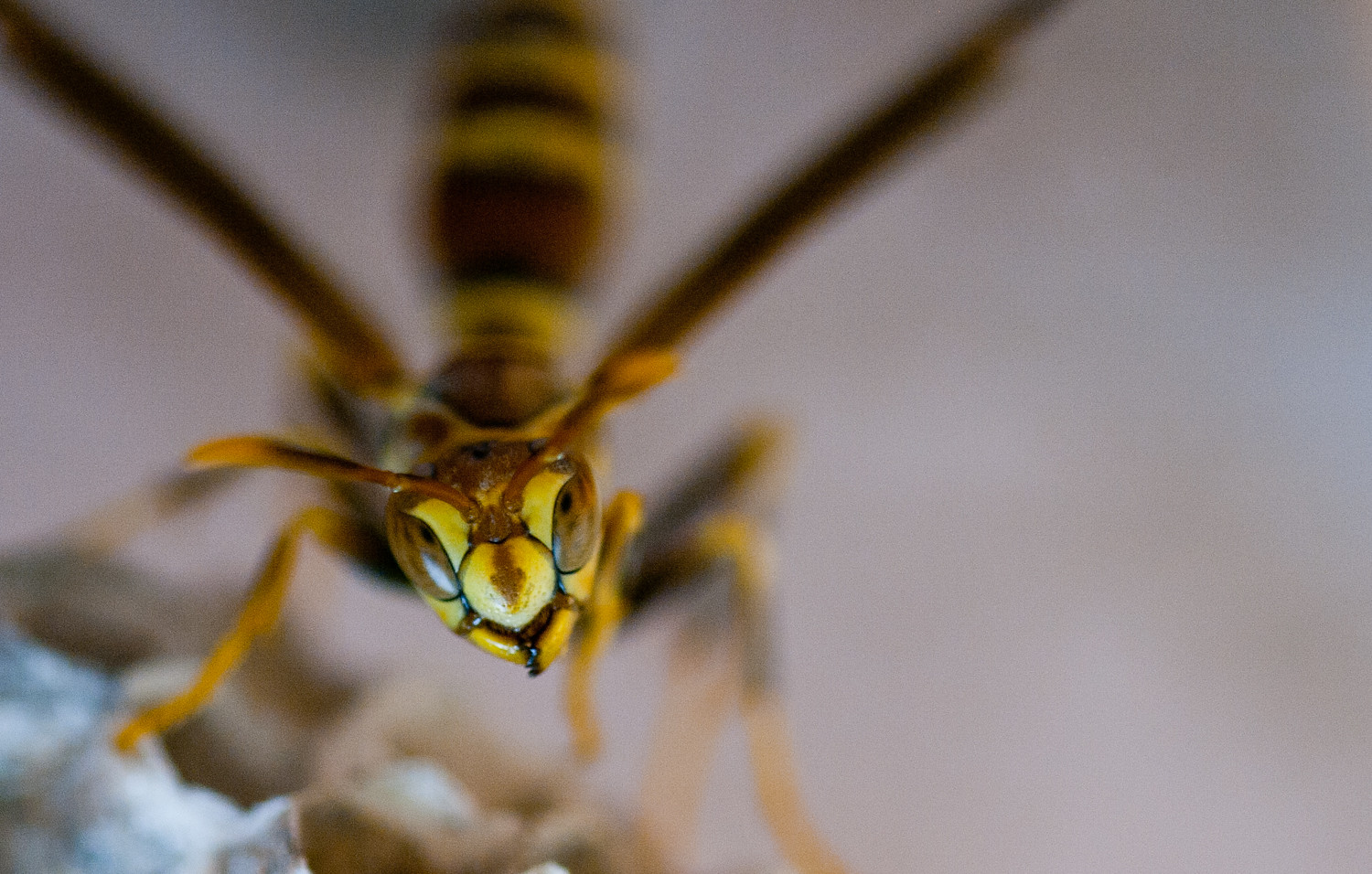
The zoom of insect wing buzzing by your ears. It’s enough to make you flinch or swat wildly at the air, and around Raleigh, there’s no shortage of these fear-inducing bugs.

The most-likely concerns for homeowners are fire ants and stinging pests that nest in the ground, such as yellow jackets, says Dr. Wayne Buhler, professor and North Carolina State Extension Pesticide Safety Education Specialist.
“I think the worst by far are what we call the hymenoptera,” says Buhler. “My focus would be on the yellow jackets and the social wasps.” Hymenoptera are the large order of insects that include wasps, bees and ants — all the things that come to mind when you think “sting.”
From the seemingly omnipresent mosquito to the painful and aggressive bald-faced hornet, here are the six worst stinging pests in Raleigh.
Mosquitoes
It’s the quintessential biting pest. It’s what immediately pops into mind when a sting interrupts your barbecue: the mosquito.
The tiny bloodsuckers are the epitome of pest, interfering with our best summer plans by buzzing around our ears and leaving us with painful, itchy welts when they bite.
Those bites can even transmit dangerous diseases including Zika and malaria, so if there ever was a pest that needs controlling, it’s the mosquito.
Most active at dawn and at dusk, the mosquito breeds in water, explains the North Carolina State University Extension. So controlling mosquitoes starts with controlling any areas of standing water in your yard.
This can be everything from a birdbath or a dead stump to children’s toys, and it only takes a small amount of water. Always “tip and toss” standing water to keep it free from breeding mosquitoes.
Chemical controls, including “dunks” for breeding sites and sprays for adult resting sites, are also available, and if you’re worried about bites, remember to wear protective clothing and keep some bug spray close.
P.S: One of the weirder insects found in Raleigh is the giant mosquito. While they can bite through two layers of clothing, they aren’t known to spread diseases to humans.
Yellow Jackets
Most people can likely spot a yellow jacket, thanks to its distinct namesake coloration, and most people likely avoid them when they see them thanks to their painful sting and habit of attacking targets in large swarms.
They commonly nest in lawns, particularly in open sandy areas and at the base of landscape plants, says the N.C. State Extension. Anywhere with a small opening leading to a large cavity is a potential nest site.
In late summer, you’re likely to find them around trash cans, bird feeders or other sources of forage.
When they sting, it’s primarily because they’re defending their nest. Something like walking over the nest with a lawnmower is sure to do the trick.
If you’re looking to keep from getting stung, you need to keep your eyes peeled for the small holes they fly in and out of, and do your best to keep away from it.
They forage for proteins and carbohydrates, Buhler says. That’s why it’s never wise to leave any sort of sweet drink unattended outside.
He recalled an instance when a can was left on top a truck, and when the drinker returned, he was greeted with a yellow jacket sting on the roof of his mouth when he went to take a sip.
Controlling yellow jackets
When it comes to controlling them, the first decision is whether you need to do anything at all.
In spite of their fearsome reputation, yellow jackets are beneficial, preying on other pest insects and serving as a food source for other wildlife.
Since their nests die out every year, it’s possible simply to wait until temperatures drop and the colony dies out.
The best method of control is an aerosol wasp and hornet spray directed at the nest opening. Do not pour gasoline down the nest. This folkloric pest control method is extremely dangerous and heavily damages the local environment.
Red Imported Fire Ant
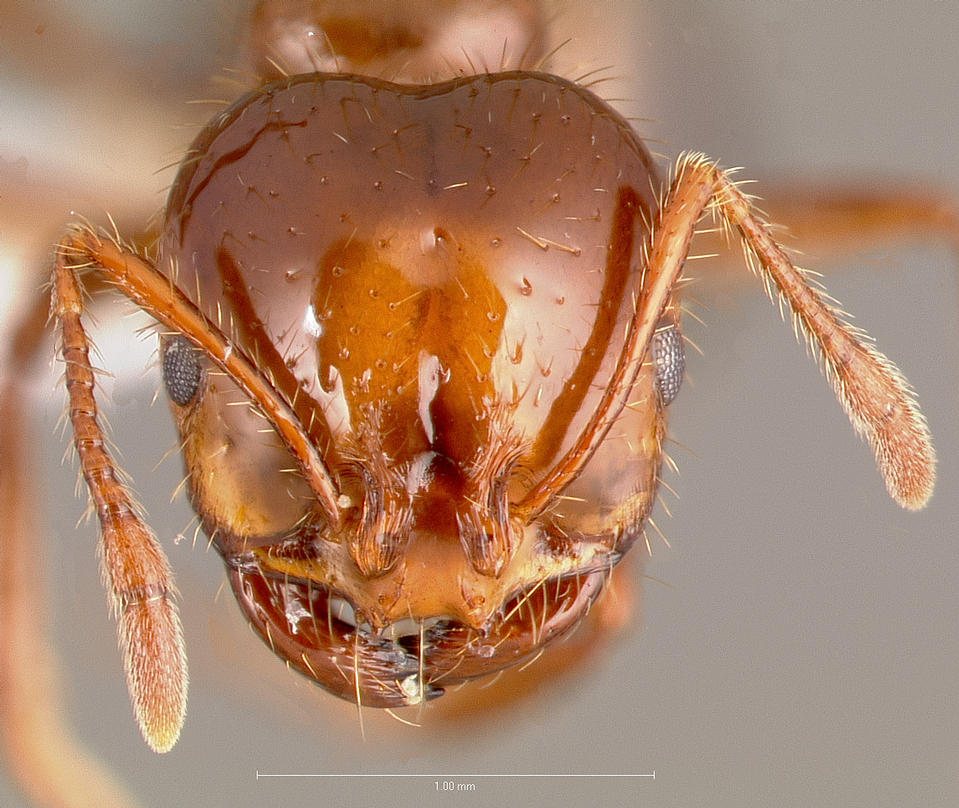
We know the red imported fire ant for its telltale painful sting. The burning sensation brought on by that sting gave the ant its name. This is one Buhler reckons to be of high concern to landscapers or homeowners working in their backyards.
Like bees, fire ants have a social structure. The colony has a social order ruled over by a queen which the other ants will defend via their sting.
And what a sting it is. Stings will often develop into pustule-like sores within 24 hours. Scratching can lead to scarring or infection. Some people are allergic, and when stung need to seek medical attention immediately.
If you see fire ants around your house or their telltale dirt mounds in your yard, you’ll want to take action, either yourself or by calling in an exterminator.
Buhler says the best option is a granular or powder insecticide bait. Hungry ants will gobble it up and take it back to the queen, eventually killing it and wiping out the colony.
Cicada Killer Wasp
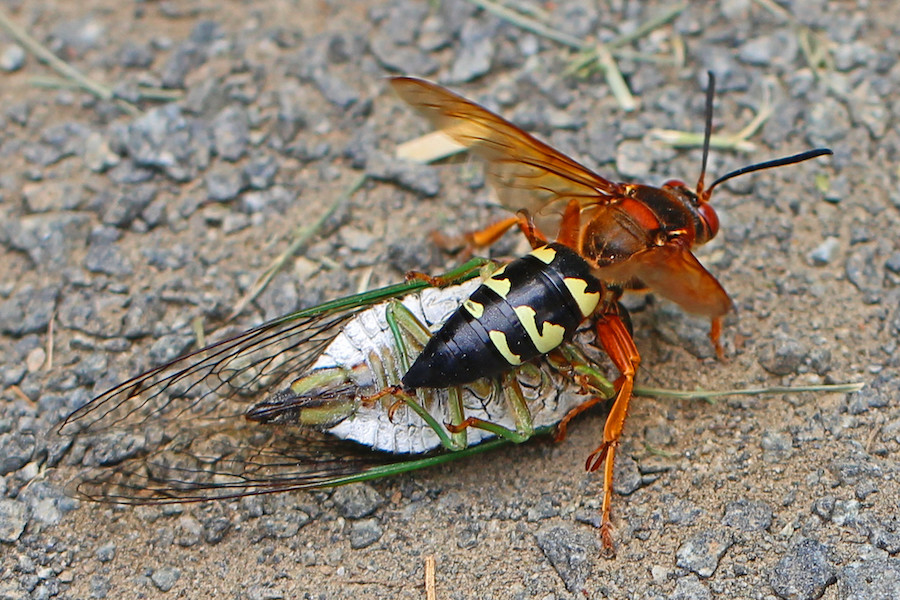
Last year, local news stations reported the presence of large, cicada killer wasps.
Large and packing a more painful sting than normal wasps, the cicada killer doesn’t normally target people. But if you threaten one enough, it will forget about its cicada dinner long enough to leave you with a painful sting. Only European hornets can compete in size and bulk.
In one lifetime, a Cicada killer wasp can kill and gather more than 100 cicadas, each weighing twice as much as her.
In North Carolina, keep an eye out starting in July and continuing throughout the summer. Just remember not to pester it.
Luckily, control of cicada killers is hardly ever needed. Males can’t sting at all and females sting rarely. But their nests can damage turf and small plants, and the main method of control is to properly fertilize your turf so it provides more of a barrier when the wasp tries to dig its nest.
You could apply pesticide directly to the nest opening, but, as now-retired Lafayette College insect researcher Chuck Holliday advised in a 2012 paper, “I believe that you are in more danger from pesticides applied to your lawn to kill cicada-killers than from the wasps.”
If they really bother you, he suggests an alternative. “You can swat and kill the wasps very easily with a badminton racquet if you swing it hard,” he wrote. “Don’t use a tennis racquet unless you play tennis regularly, as it will quickly give you tennis elbow and it is hard to accelerate quickly compared to the much lighter badminton racquet. You may, if you like, call this aerobic exercise.”
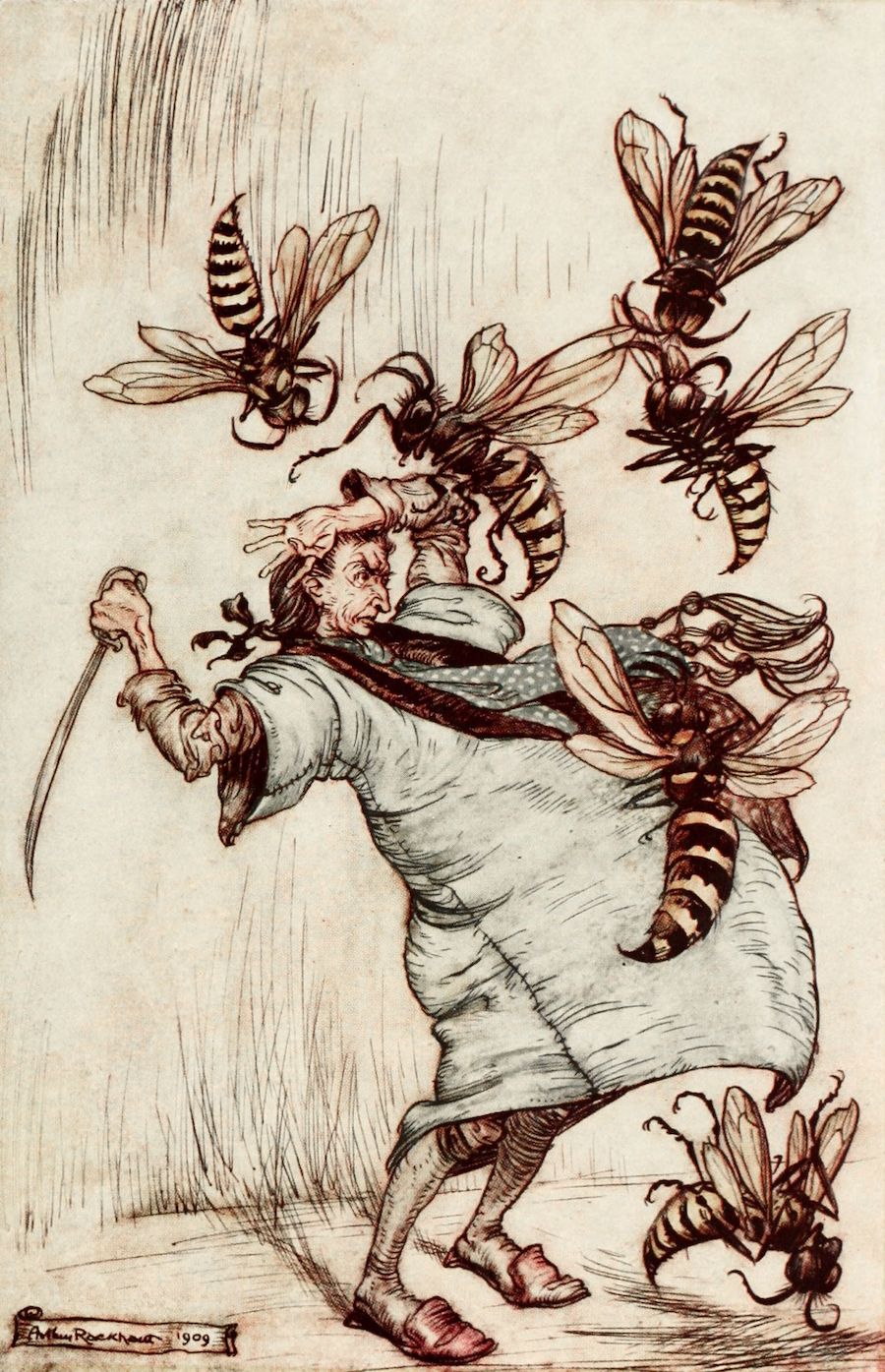
Paper Wasps
These very common, but no less frightening, wasps come in many different species, but are the ones you’re likely most familiar with.
Called paper wasps because of the paper-like substance used for their nests, the wasps really pack a punch, able to sting multiple times, mainly in defense of their nests.
That’s not good news when you see those nests, commonly built under roof overhangs, on screen porches or other areas around your house.
This is one species that Buhler emphasized.
“They tend not to be a problem unless you’re right at their nest or interfering with their nest,” he says. “They’re not nearly as defensive as yellow jackets.”
Paper wasps are also considered beneficial insects, controlling populations of other insects, particularly caterpillars. The extension even notes that tobacco farmers will build wooden nest boxes around their fields to control caterpillars plaguing the nearby crop.
They have a social structure like bees, with a queen who starts a nest in the spring and workers that continuously hunt and gather food to bring back to the nest and feed their young.
As far as controlling the wasps, the extension says to attack them in the evening with a normal aerosol wasp and hornet spray.
If it’s a small nest it can be knocked down with a broom, or if there are individuals inside the home they can be swatted, stepped on or simply vacuumed up.
European Hornets
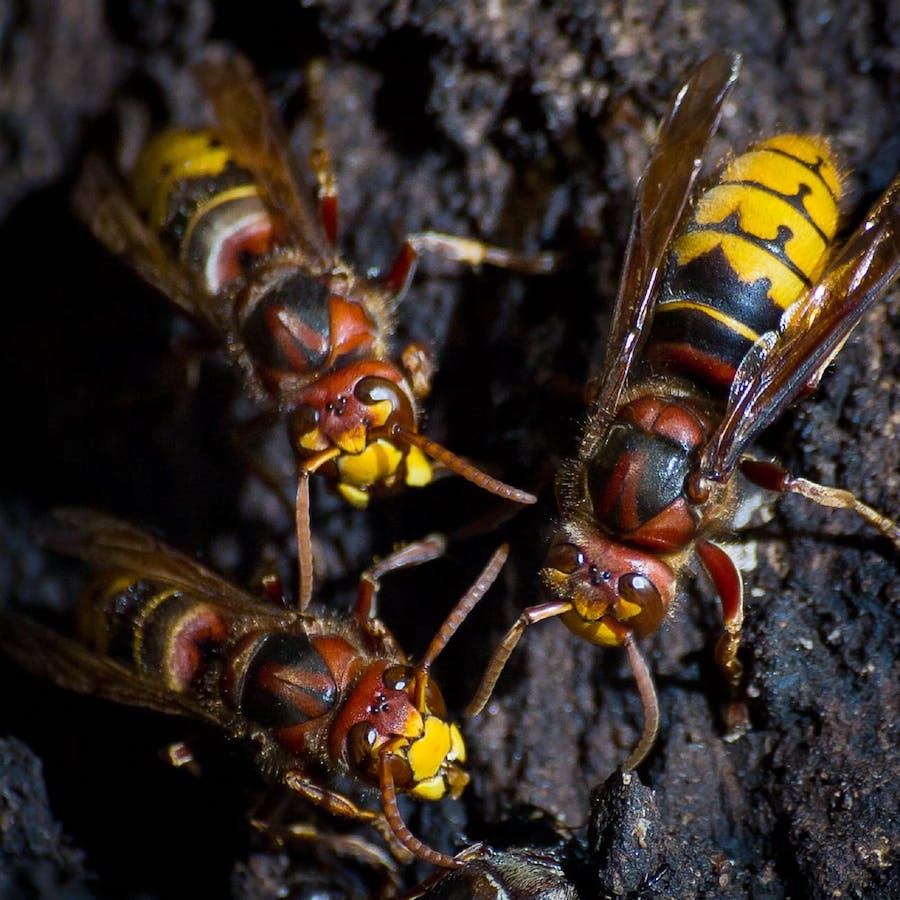
The European hornet, often called brown or giant hornet, is the largest hornet found int he U.S., according to the extension.
When one of these puppies flies around your head, you’ll know it. The adults resemble yellow jackets in their markings, but are much larger, growing as long as an inch and a half.
Nests are typically built in hollow trees but also in barns, sheds, attics and inside the walls of houses.
From there, they set out to find grasshoppers, flies, bees and yellow jackets to eat, continuing to build their nests until they get up to several hundred individuals strong — sometimes as many as 1,000.
When temperatures cool off in winter, the workers die out and the queen seeks refuge elsewhere and old nests aren’t reinhabited.
But while they’re active, they’re really active. Instead of going dormant at night like the majority of stinging insects, European hornets stay active.
Possibly attracted to the light, they’ve been known to slam hard into windows, leading some people to think they’re actually trying to break the glass.
The best control method is a regular aerosol wasp and hornet spray. Direct the spray into the nest for 5-10 seconds, the article says, and then quickly leave the area to dodge the hornets coming out of the nest.
Bald-Faced Hornets
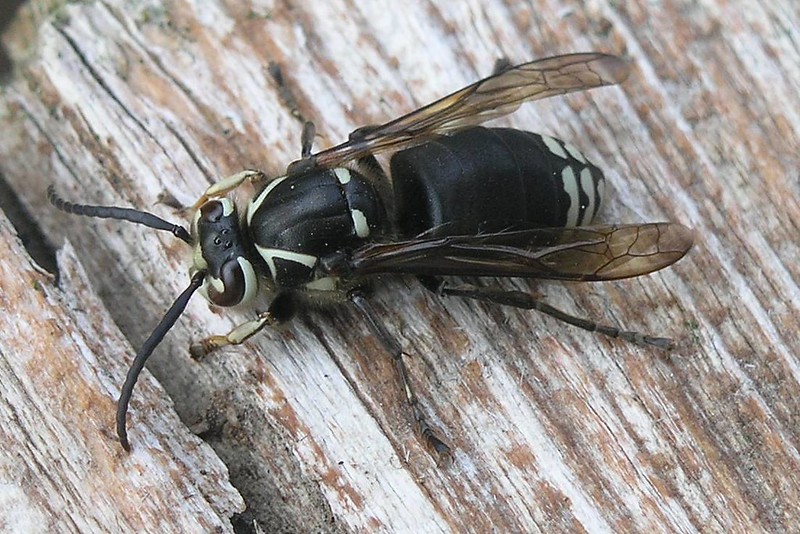
So named because of white patches on its face, the bald-faced hornet is actually a wasp, but thanks to its large size and aerial nests it’s known as a hornet.
Like paper wasps, the N.C. State Extension says, they catch and eat caterpillars and many other insects that damage landscape plants.
But if they do build a nest near your house, it can become a hazard as the extension says bald-faced hornets can sting repeatedly and when a nest is threatened, many of them will swarm out in its defense.
The sting is nothing to be trifled with. According to the extension, the sting is instantly painful and the symptoms: itching, swelling, soreness, can last for days.
And having a swarm of hornets attacking you, all with the ability to sting you over and over. You may need to take some action, by calling in a pest control company or doing it yourself.
If you go the DIY route, you can control bald-faced hornets as long as you can locate the nest. When you find it, observe it for a few minutes and see if it’s active. You should see workers moving in and out.
Two different chemicals can control them, including aerosol wasp and hornet spray and Sevin dust. If using aerosol, spray the nest thoroughly as with paper wasps or European hornets.
Apply Sevin dust in the evening when the hornets are less active. Use a duster to blow the dust into the nest, and the colony should die out in a few days.
Being Prepared
Itching not to get stung? Buhler recommends keeping a can of wasp and hornet spray handy while doing landscape work, or within easy reach in your vehicle.
And when controlling social insects, like bees, yellow jackets or fire ants, be sure to get the queen.
For those ground nests, Buhler says sprays won’t do it. Use a granule or powder and line the entrance to the nest during evening hours when the insects are less active.
This way, when they bring back food, foragers will track the insecticide back into the nest and eventually to the queen.
Within a couple of days, that nest will be history — and so will the fear of getting stung the next time you reach for that lemonade.
To find out more, Buhler recommends Raleigh homeowners check out the N.C. State entomology website.
Main image credit: Yellow jacket, Greg Westfall, CC 2.0.